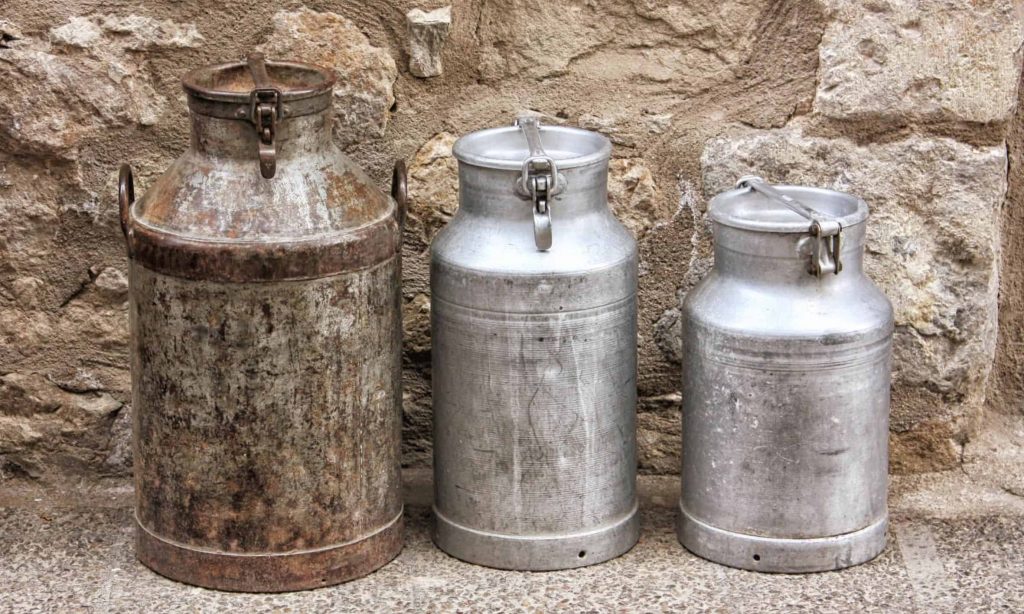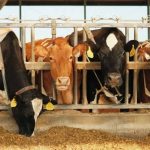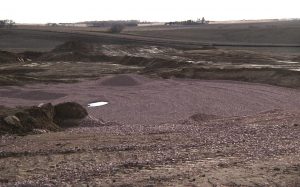
Back in August, after our younger son sold his house in Denver, he gave us a television set, a quilt and a couple of wooden crates from a once-thriving dairy in Mitchell.
The son was in a give-away mood. He and his spouse were selling their city place to move up into the mountains. He’d have given us more stuff, but you must draw the line somewhere. Besides, the milk crates were enough for me.
They are in good shape – barely scarred, no missing nails or slats. Strips of tin, nailed to the wood, protect the edges. Even the paint on the slats has survived the years and whatever jostling the crates may have taken in their lifetime of service.
The blue-gray letters on the sides of one crate read “Culhane’s Dairy. Mitchell, So. Dakota.’’ The other crate simply has a face painted in yellow. It’s a smiling face, a young man with a shock of hair sticking out from under what I would call a milkman’s cap. The front of the cap reads “Culhane’s.’’
Of course, I knew Culhane’s Dairy. They sold milk out Chamberlain way when I was a kid. Back then, they were a big competitor with Riverside Dairy. That was the hometown dairy operated for many years by my wife’s folks, Paul and Lorene Gust. Real old-timers in Chamberlain remember when Paul and Lorene owned the dairy. More recent old-timers remember when the Gusts owned the A&W Family Restaurant just off Interstate 90 at the exit on the east bank of the Missouri River
Paul Gust loved being his own boss. He worked hard. He played hard. He said so himself. Then he would add, “And when I think, I fall asleep.’’ There wasn’t a lot of time for playing or sleeping in the dairy business. I don’t know much, but I know that much.
In those days, according to the stories I have been told by some of the in-laws, the dairy workers drove trucks out into the countryside around Chamberlain to gather milk from area farms. They transported the milk in heavy metal cans, variously called milk cans or cream cans.
Two of Nancy’s brothers remember making such trips to the country. They also remember when their baby brother climbed in the old milk truck – an ancient vehicle called “Lightning’’ – and released the emergency brake. The truck and the little boy rolled down the steep street toward the river. It hit a tree or something before it reached the bank.
I mentioned that smiling guy on the Culhane’s milk crate. I haven’t heard many stories of dairy workers smiling. My dad, a bull-strong farmer, called it the toughest work he had ever done. My big brother worked at Riverside for some months after high school graduation. He had been ambivalent about college. After a stint at the dairy, he really, really wanted to go get a higher education.
For a time, milk cans were stylish, an essential piece of home décor. It was probably after many small-town dairies had gone under or sold out. Milk cans, painted in bright colors with flower designed or sun-and-moon images, could be found on display in trendy little shops.
That was about the time that those old green-glass insulators were hot items as candle holders and such. We had a pile of those things on the farm when I was a kid. Dad helped with the telephone line or something. With our single-shot .22 rifle, my cousin and I blasted the dickens out of the pile of green insulators. In our defense, who would have thought they’d be worth something someday? And who thought an old cream can would be in demand?
I am old enough to remember when milk came in glass bottles that the delivery person left on the doorstep early in the morning. Tell someone that today and they might think you were confused, lost in time, remembering a part in a Hallmark holiday movie or something. But it really happened, back in a time when many towns, small and large, had their own dairies.
If that doesn’t sound like a good time to live, well, you had to be there.




















